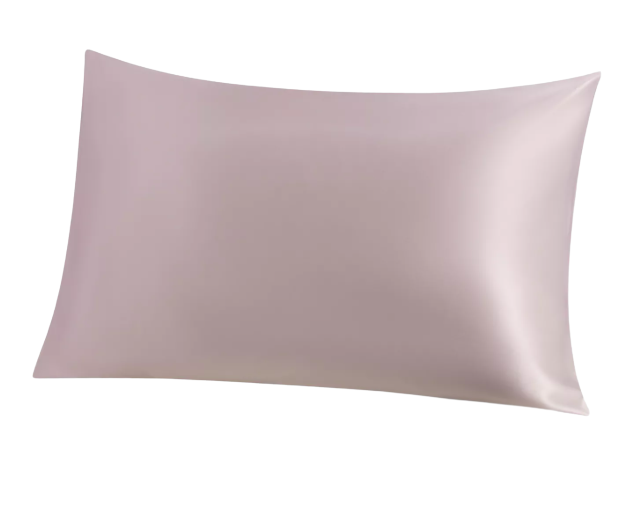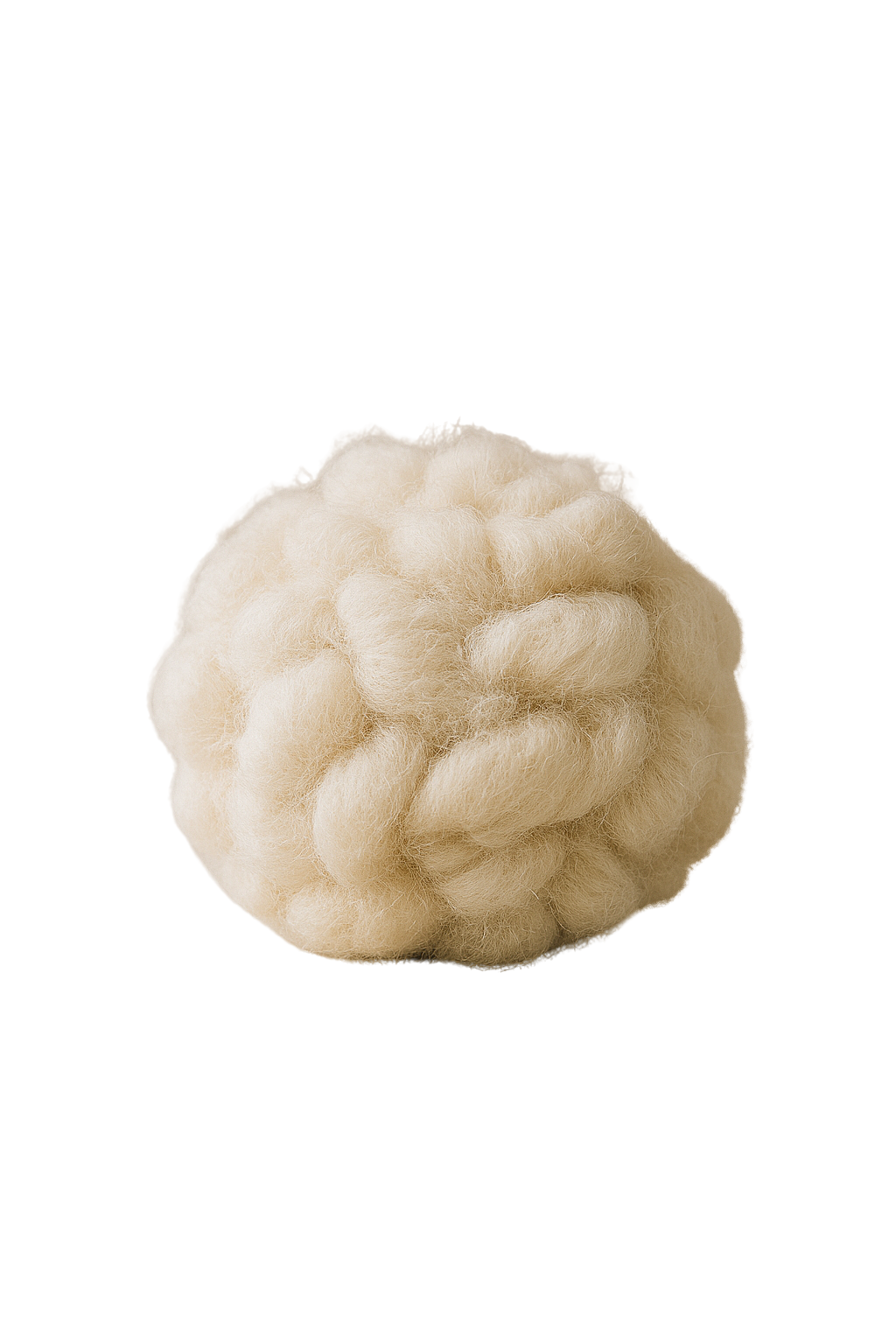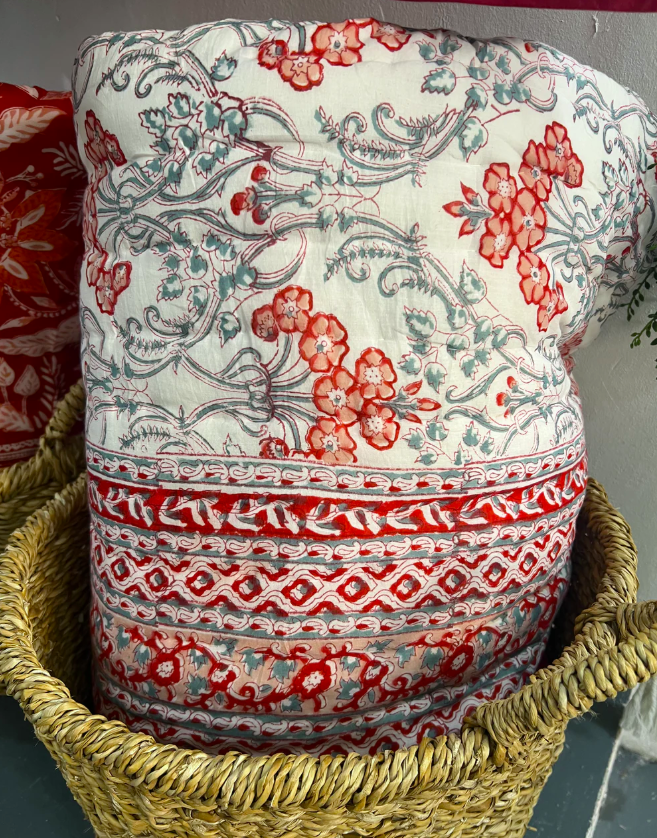BEYOND THE LAND OF COTTON: a guide to natural bedding
I was recently listening to a podcast episode featuring Kate Arnell, a former TV presenter turned plastic-free living expert. At one point, she mentioned the first place she would recommend somebody start when trying to transition to a non-toxic home would be our beds; After all, we spend hours in them everyday - and we do this with our bodies encased in them, our airways mere centimetres away.
Many people already do their best to avoid synthetic fibres in their their sheets, reasoning they often make you overheat and don’t last as well, instead opting for 100% cotton. I want to encourage you to look one step further.
India and China hold nearly 50% of global cotton production, and the majority (96% in China, 90% in India) of this is a genetically modified crop steeped in fungicides, herbicides and insecticides ( 16% of the world's supply!!).
Thus, transitioning to organic natural fibre bedding is the best choice the health of ourselves and our planet.
As a quick history lesson, genetically modified ‘Bt cotton’ (Bacillus thuringiensis) was first grown in India 2002. It aimed to reduce the need for insecticides by producing a toxin to kill bollworm, a common pest reducing yields. Since then pesticide use for bollworm has reduced by 97%, but this has swiftly been offset by an increase of 154% in pesticide use for sucking pests who are now facing far less competition. Thus, 23 years on we’re left with a genetically modified crop leaching toxins and requiring more pesticides than it did on the first place..
If you are looking to transition to organic bedding I’ve curated a small guide below including materials, features, and brand recommendations that I hope is useful:
MATTRESS
This is one area where most of us are actually still using synthetic materials. I understand there’s a layer of sheets between us and our mattresses, but don’t be fooled - standard mattresses are generally made of polyurethane foams (plastics, people!) and treated with synthetic chemical flame-retardants that can off-gas, causing irritation to our skin, eyes, and lungs.
Beyond that unsettling thought synthetic fibres trap heat, easily causing us to overheat & break into sweat, and then hold onto that moisture risking odour, mould & mildew.
Luckily, there are now natural fibre mattresses available. These mattresses are free from toxic materials, hypoallergenic, and temperature regulating. There are a few brands I’ve heard of, but my top choice would be the Devon-based brand ‘Naturalmat’.
All of their materials are biodegradable or recyclable, including their locally sourced and certified organic wool (fire resistant due to naturally high water and nitrogen), their hand-tapped latex blended with graphite as a natural fire-retardant, their locally made tufting buttons, and so on; Every detail has been thought about. They have a few show rooms across the country so you can test out and decide which mattress from their two ranges - pocket-sprung surrounded by natural fibres (softer) or entirely natural fibre (denser) - works best for you.
They offer a 10 year guarantee, after which they offer to either recycle, refurbish, or donate it for you to ensure none of their mattresses are contributing to the 5 million sent to landfill every year in the UK.
I’m not suggesting here that everyone can just buy a new mattress whenever they so wish, they are incredible expensive bits of kit - but they do need replacing roughly every 8 years so if you aren’t already budgeting for this you should be! Given their limited lifespan, replacement time offers a great opportunity to make a healthier, greener choice.
BEDDING
SHEETS, PILLOWCASES, & PROTECTORS
These are the more accessible swaps to get started with, which is useful as they’re the things closest to your skin and airways! I’m only at this stage as I’m waiting to move out to swap the rest, and that’s okay - slow swaps are the most sustainable in this case.
Organic cotton, silk, hemp, linen… you can find it all. My personal preference is organic linen for fitted base sheets, duvet covers, and ‘top’ pillow cases, then organic silk ‘bottom’ pillow cases (i.e. you have a stack of two pillows, the top one matches your duvet cover & the bottom one you actually sleep on).
I like linen for a few reasons: it lasts incredibly well, it’s fantastic at temperature regulating, gets softer with time, and just looks so chic! It’s also considered easy to grow, using less land, water and energy than organic cotton, whilst being that bit softer than hemp.
Most often you’ll see linen bedding labelled as ‘French Linen’ - i.e. grown France - but there’s also Irish , Italian, Baltic, Belgian, etc. The area in which the linen is grown subtly affects some features of the fabric, notably the softness (Irish is considered the best). Be sure to avoid Chinese ‘linen’ as it’s unlikely to actually be linen, they’ve just found a way to mimic the weave with synthetic fibres.
I’ve found two UK based brands that make 100% organic linen sheets so far, Naturalmat & the Natural Bed Company. Both use GOTs certified European linen, but I lean towards Naturalmat as it’s then made in Portugal rather than China. Both companies have limited colours which initially disappointed me, but I’m hoping this will mean they make a nice backdrop to a decorative quilt (as discussed below). You can buy everything separately or as a bundle, giving you the flexibility to collect elements as & when you can over time.
If you were wanting organic cotton sheets there are so many options, but I’d be inclined to suggest ‘Rise & Fall’ - they offer luxury bedding at more attainable prices by using a near just-in-time supply chain. They do offer linen bedding but sadly it’s not organic.
When it comes to pillowcases I have no major issue with linen, I just feel silk is that bit gentler on your skin and hair. There’s a lot of silk pillowcases on the market, but not many are organic. Even fewer also have a ‘momme’ (a measure of weight & durability) of 22. So far I’ve only been able to find a pair from Jaspar Conran, and they’re available at John Lewis. I couldn’t find much about their ethical practices, but they are GOTs certified which should ensure fair labour practices.
I also plan on having an organic mattress protector (wool from organic farms in the west country encased in organic cotton) and organic cotton pillow protectors, both from Naturalmat again.
I like to think I am a very clean person, but I imagine 10 years of sleep with only a sheet between you would leave anyone’s mattress, duvet & pillows a little less clean than they started - and it’s not like you can deep clean your mattress at home. An extra layer just makes me feel everything’s going to stay that bit fresher.. I’m also terrible for having tea in bed & don’t want to risk the effects of a spillage!
DUVETS & PILLOWS
Once again, I plan to opt for Naturalmat offerings for my duvet & pillows.
They make organic wool, goose down, and duck feather duvet options. I have heard good things about the wool, but because they’re quite slimline I just don’t think they look as cosy as the down ones. Goose is the more expensive down option given it’s more plush and durable. When it comes to feather & down it’s worth checking they’re certified by the European Down and Feather Association (EDFA), which ensures they’re responsibly sourced without live plucking (yes, this happens!!).
My fiancé & I are considering having a double bed over a king-size, as we both currently have doubles and haven’t felt crammed (I am tiny, 5’1”, so maybe this isn’t surprising!), plus then we’d have more space in the rest of our room. However, we’ll still be having a king-size duvet, as my mother has instilled in me that you should always have a duvet a size or two bigger than your mattress (i.e. a king-size duvet for a double bed); the extra size & wait means they hang down nicely either side of the bed covering the mattress, and, more practically, they limit any bickering around ‘duvet hogging’.
Naturalmat’s pillows all feature organic wool (temperature regulating, naturally anti-microbial, anti-dust mite, & fire resistant due to its high water and nitrogen). I like the idea of their down and wool option that combines a supportive woollen core with a soft down outer, but if you prefer a firmer feel they have a completely woollen offering that has a genius centre stitch to cradle you head.
QUILT
Whilst I don’t feel a quilt is essential, they are practical, double as décor, and can become an heirloom piece for your family.
Growing up my grandmother always had a quilt draped over the end of the bed when we came to visit. We used them as an added layer in winter, instead of a duvet in summer (with a flat sheet in between that could be easily washed), and as a cover for the bed when we wanted the dogs to come up for a cuddle. I always thought they looked so pretty, especially the floral ones.
I’ve searched high & low for similar ones made from organic fabric in the UK to no avail; Whilst many have organic cotton outers, they also have a polyester stuffing and/or ‘modern’ abstract designs that just weren’t what I was looking for ( did the best ones, if you were interested in that type of design). Genuinely, I’ve spent hours searching.
As a compromise, I started looking for organic quilts designed in the UK but made abroad. I only found one: Dilli Grey, designed by a small team of five women in London, made just outside of Jaipur.
Their quilts are printed in family-run printing houses employing unskilled young men, providing them with accommodation and training in traditional Rajasthani textile design. They are then sent to a female cooperative to be hand quilted.
The company works directly with their producers, with an ethical pledge promising fair wages and safe working conditions. They also have a zero-waste pledge, which includes producing limited runs so no excess stock is sent to landfill.
They also make other products, including womenswear & cushions - I’m tempted to ask them to make a decorative cushion for the top of the bed to match whichever quilt we decide on.
Another find is The Jaipur Wala. These have no connection to the UK but they are also entirely organic cotton, shipped with plastic-free packaging, and dyed using roots, flowers, & earth.
They are handcrafted (sewn & blocked) by a collection of female artisan cooperatives in Jaipur, providing them with fair wages and dignified working conditions.
I completely understand that these quilts, and frankly all of the bedding mentioned, are an investment. However, I’d rather save up for a while to get one of these than support the kinds of practices that go into a cheap synthetic blanket sold by a high-street shops.
In the pursuit of non-toxic, low waste living I often forget to look into who made an item. This feels odd to me as I spend a great deal of time thinking about the treatment of the farmers, land & animals involved in producing my food, but perhaps it’s because food shopping is a far more common occurrence. In the last few months, on the rare occasion I buy something online, I’ve been reminding myself to look for their ethics/production practices and if I can’t find anything I will email before purchasing. Generally, if there’s nothing on their website about it then I know the answer is going to be disappointing but I still think it’s worth sending an email to let them know it’s noticed.
I hope this little dive into my research has been helpful to you!
If I come across any more exciting brands selling organic, natural fibre bedding in the UK I’ll be sure to add them in. If you know of any that you’d like to share then please do email me at rosesandreverieinfo@gmail.com.







